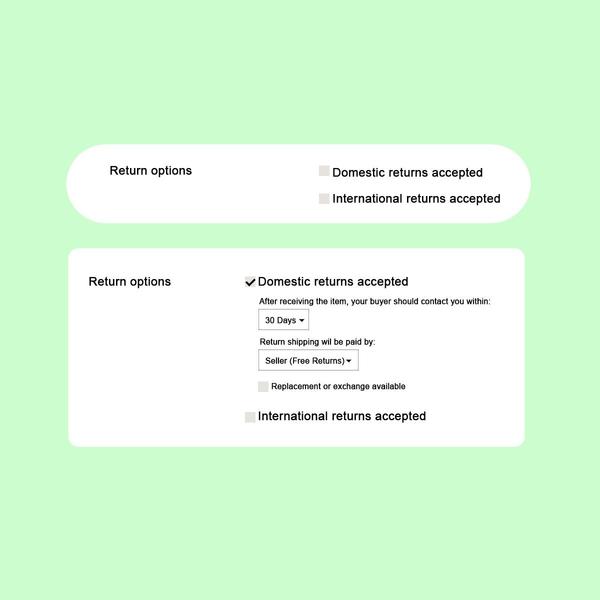The Benefits of Accepting Returns
Offering returns can help boost your CBT sales!

67% of buyers would buy more online if the seller accepts returns
The reason is simple. When you accept free returns, you earn buyers’ trust and provide them with the confidence in your service and/or products. It gives you the advantage over your competition.
Just like free shipping, accepting returns would convert someone who’s still deciding into clicking that “buy now” button. In fact, the conversion rate from “maybe” to “yes” is 15% when you accept returns.
Accept Returns and Accept More Sales and Traffic!
Improve sales
Global buyers are experienced online shoppers. A 30-day return policy is the standard practice that they expect from a trustworthy seller.
Improve traffic
The eBay search algorithm actively boosts the search results rank of listings with 30 or 60 days returns policy. That’s when you’ll really benefit.
Will there be many returns?
This is probably your second question. We are happy to tell you, the answer is, not really.
Only 2% or less of your transactions.
It really depends on the product category that you sell in. For example, apparel typically has higher returns than a book, since sizing can be quite subjective.
On the whole though, if you are a responsible seller both in terms of prompt service and quality products, the risks are minimal.

What are the best practices for returns?
-
Accept Returns
-
30 or 60 Days Returns
-
Free Returns (Seller pays for returns)

Who pays for the return shipping?
This depends on the reasons for returns.
Your Error
Carrier’s Error
Buyer Remorse
Free Returns
How to set up your returns infrastructure?
So how does a buyer return an item to you? You have 4 options to choose from. Do speak to your shipping carrier for details.

1. Pre-provide return shipping label
2. Generate a return shipping label on demand
3. Local returns consolidation
4. Buyer arranges their own return shipping
How to enable returns?
If you have wisely decided to accept returns, this is how you go about it.
When creating a new listing, there is a section under “Selling Details” to set your return policy. Sellers will have the flexibility to set different return policies for domestic and international returns.
Returns will not be accepted unless the seller selects domestic or international returns.
To set 30 or 60 Days + Free Returns, simply select either 30 or 60 Days as well as ‘return shipping will be paid by the seller’.

Definition of Domestic vs International for Cross Border Trade (CBT)
For CBT, domestic or international refers to the country of your chosen listing site, not your own location.